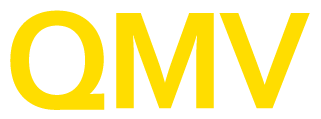Blockchain Technology A Silver Bullet For Superannuation?
Many have speculated that blockchain technology will supersede the inefficiencies of superannuation administration in one glorious rebirth. QMV is exploring how (or if) blockchain can be used in practice to produce gains for funds and members. In this article, I hope to share the basis of what pension and superannuation funds need to know about blockchain technology and what they should do about it.
What is blockchain technology and why the excitement?
Blockchain technology in plain terms is a ‘shared’ ledger system (sometimes called a distributed ledger). The ledger comprises blocks of data which are timestamped, hashed and linked to form integrated chains. The driving force is consumer desire for access to more information, more quickly and to have more control of that information.
Blockchain is famous for the open technology that processes Bitcoin transactions by recording them all on a public (distributed) ledger. But let’s not do Bitcoin today.
A distributed ledger is a shared database of transactions that is distributed across many different locations, institutions, geographies and so on. Each participant in the network has their own copy of the ledger and all changes to the ledger are reflected in near real time. The assets the ledger tracks could be financial, property, legal, physical or electronic. The security and accuracy of the ledger is controlled by cryptographic keys and electronic signatures that control who can do what to the ledger.
Security and economy are qualities that are enticing companies, regulators and governments to explore how blockchain might be used to process other types of transactions.
Potential uses for blockchain technology in superannuation
Funds need to know that blockchain technology can potentially eradicate inefficiencies in the way superannuation funds manage data and transactions by:
Increasing accuracy - current superannuation ledger systems are siloed and contain many versions of the truth, blockchain would reduce the complexity of data and number of interfaces to the silo.
No need for reconciliation – blockchain moves us away from expensive and inefficient third-party verification processes as the ledger is shared between all participants including funds, trustees, administrators and regulators.
Reducing cost – blockchain transaction costs are almost negligible because there is no ‘middle man’ or gatekeeper. Asset ownership records are transferred much faster between all copies of the ledger within the network.
Reducing external threats - cyber-attack, fraud and compromised data risks are significantly reduced as the ledger is shared by many parties, it becomes almost impossible to tamper with as others would spot a change to any part of the ledger. Any attack would also need to attack all copies of the ledger simultaneously to be effective.
Consolidation - blockchain can supersede numerous superannuation ledger systems built at different times with different technologies as it allows organisations to modernise their own internal systems and interactions with each other based upon a shared ledger.
Improve service capabilities – blockchain can accommodate 24x7x365 service levels with new ‘Blockchain as a Service’ offerings.
How will the value chain be disrupted?
Banks and financial institutions globally are investing heavily in blockchain technology. The main four Australian banks have research departments looking into ways of using this technology and Price Waterhouse Coopers recently recruited 15 technology specialists to work to ‘exploit and commercialise blockchain’. The ASX is working with US company Digital Asset Holdings to build proof of concepts within the cash equities post trade business.
The custodial banks are currently looking at this technology to support securities settlement and asset documentation and this is likely to quickly flow on into the banks fund management arms. It would not be that great a leap to then expand usage of this technology within the member administration solutions. How about a member centric approach to data which would make it easier share information between trustee and administrator, share information with insurers, share information with financial planning solutions and to easily move member data between funds.
What should funds do now?
First mover advantages will inspire some funds to invest in researching practical applications of blockchain technology because the payoff is potentially significant. Larger funds may have the resources to explore functional concepts and prototypes and small to medium funds in some cases may do better to combine ranks in the name of research and development.
The alternative is to sit on the sidelines (for now).
Superannuation administrators can start to track financial movements, record assets, record member details, settle accounts and so on all via a single platform of distributed ledgers. It will take time to grasp this technology and to make sure of the benefits without unexpected pitfalls.
Funds and or trustees need to be having conversations about blockchain with experts like QMV who have extensive systems and technology know-how in superannuation. We hold a promising view of blockchain technology and are actively exploring potential gains for funds and members.
For further information please contact Sebastian Amodio – Software Architect at QMV Solutions via our online enquiry form.

